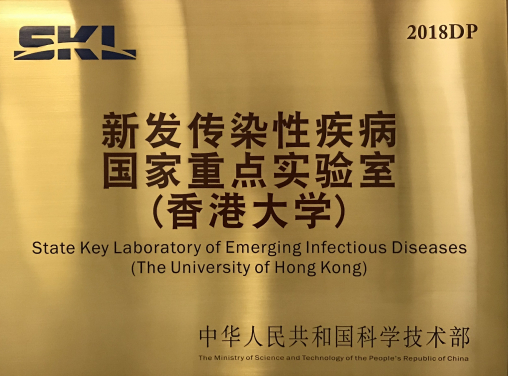Novel Coronavirus Mutant at early phase of pandemic
with characteristics of attenuated vaccine
The SARS-CoV-2 coronavirus was first discovered in Wuhan, China at the end of 2019. Evidence from genome analysis studies indicated that this is a cross-species transmission of the novel coronavirus. It is believed that SARS-CoV-2 coronavirus will continue to adapt to human through infection and transmission. However, how the SARS-CoV-2 virus first spread across humans is still unclear.
The SARS-CoV-2 and the SARS coronavirus that appeared in 2003 both use the angiotensin-converting enzyme 2 (ACE2) of human cells as the receptor for viral infection, but the spreading ability is very different between the two coronaviruses. The spike of the SARS-CoV-2 coronavirus has a basic amino acid insertion (polybasic motif), which is likely to be related to the pathogenicity and distinct of the ability to effectively infect humans.
Researchers from the State Key Laboratory of Emerging Infectious Diseases of the University of Hong Kong (HKU) found that in the process of human cell culture of SARS-CoV-2, the early virus will quickly lose the basic amino acid motif in the spike protein, but it does not affect the virus replication in human cells.
In the study with hamsters, it is found that the mutant strain of the SARS-CoV-2 that lost the basic amino acid motif is almost non-pathogenic to hamsters. The infection process can induce a comprehensive humoral and T cell immune response, but it does not trigger the adverse immune response like in the wild-type virus. Hamsters that have been infected with the mutant virus can completely resist the re-infection of the wild-type virus, suggesting that this non-pathogenic mutant strain of the SARS-CoV-2 has the characteristics of an attenuated vaccine.
The research also reveals that in human cell culture, the virus with the mutant strain has a reproductive rate even higher than that of the prototype virus, which is of great significance for the preparation of inactivated vaccines from the new coronavirus.
These findings have recently been published in Nature Communications [link to publication]. The research team members include Professor Chen Honglin of the Department of Microbiology, Li Ka Shing Faculty of Medicine, HKU (HKUMed), Dr Wang Pui, Scientific Officer and Professor Yuen Kwok-yung, Henry Fok Professor in Infectious Diseases and Chair of Infectious Diseases, Department of Microbiology, HKUMed.
The findings also suggest that the SARS-CoV-2 coronavirus is a cross-species event of infection of humans from coronavirus of animals. SARS-CoV-2 contains a PRRA polybasic motif which is not found in the most closely related bat and pangolin coronaviruses currently known. The presence of a polybasic motif at the S1/S2 junction of the spike protein of SARS-CoV-2 is considered a critical element for enhanced coronavirus infectivity in humans and zoonotic potential. During the early phase of human transmissions, this possibly acquired basic amino acid motif is normally unstable in the viral genome and the virus is prone to lose the motif. In the subsequent human transmission process, the virus continues to acquire other adaptive mutations and become stable in carrying basic amino acid motif for spreading efficiently in humans.
"This loss of basic amino acid motif is only found in the early phase of SARS-CoV-2 coronaviruses. Thereafter, the SARS-CoV-2 coronaviruses have undergone more adaption to humans and gained more mutations in humans for more than a year. These mutations have stabilised SARS-CoV-2 genome and prevent loss of basic amino acid motif during replication in human cells," said Professor Chen.
"Our study indicates that the SARS-CoV-2 coronavirus is still in the process of adapting to humans, and more mutant strains will occur in the COVID-19 pandemic. We must therefore prepare for the emergence of new mutant virus strains. At the same time, the mutant virus that loses the basic amino acid of the spike protein has low pathogenicity and higher reproductive ability in cultured cells than the original wild-type virus, and is an ideal strain for use in the production of inactivated vaccine." Professor Chen added.







